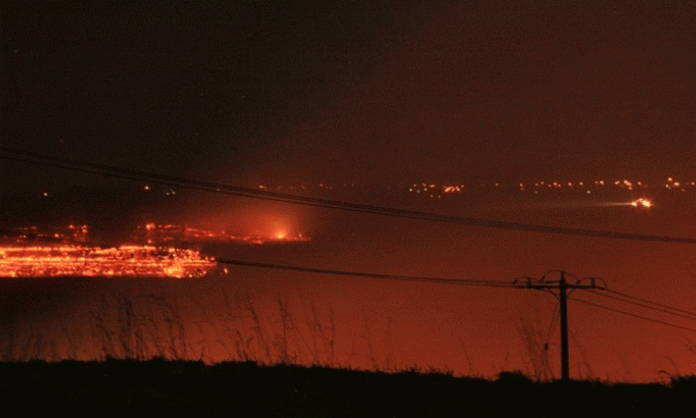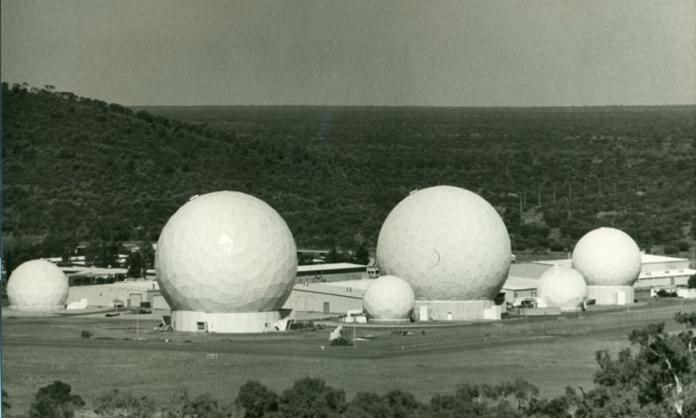A public health disaster is unfolding in Victoria’s Latrobe Valley. The brown coal mine connected to Hazelwood power station has been burning since 9 February, and fire authorities are at a loss as to how to put it out.
The fire is six kilometres across, a kilometre down and at least two feet into the coal face.
The area is blanketed by thick smoke. Environmental Protection Agency Air Quality Index readings have shattered records. A reading above 150 is considered “very poor”; above 200 indicates that the air pollution is “hazardous”. Morwell, which is next to the mine, had had a number of readings above 500. On 21 February, the reading reached 1,300.
“Avoid prolonged or heavy physical activity, get inside [and] bunker down”, urged the EPA’s Tanya O’Shea. There have been no readings in Churchill, Newborough, Moe or any of the other smaller towns in the area.
My dad Brett is a miner at Hazelwood. Despite the dangerously polluted air, he and his colleagues are still being sent down to dig coal. Twice now he has emerged with elevated and dangerous levels of carbon monoxide in his blood.
The second time he had to be rushed to hospital. “I was digging coal from way over the other side of the open cut and I thought, ‘There is no drama here, the wind is blowing pretty strong.’ I only went outside for half an hour to check the oil levels and then the next thing you know I am going to hospital”, he said.
Ambulance services, the hospital and local GPs have all reported an increase in patients due to respiratory problems. Speak to anyone in the Valley and they will tell you that people are tired, headachey and sick.
Government authorities have recommended that people leave the area if they can, especially if they have pre-existing respiratory problems.
But leaving is not feasible for many people. Single mum Casie Konnodouras says of her 5-year-old son Declan, “He has had the worst breathing. He didn’t eat for two days because his throat was so sore. It’s crazy. Dad works at the tip, he’s come home every night and used Mum’s ventolin. He’s not an asthmatic; he’s just been breathing so bad.
I ask her if she has considered moving out until the fire stops. “To where?” she responds.
Emily Jones is from Moe but works in Morwell. “It is revolting. I’ve had a headache for days. The air is thick with smoke and ash. People I know are getting sick from being exposed to it. I’m home now but can still taste it. I hope they can get it resolved soon as I worry about the long term health effects”, she says.
Particularly vulnerable are the elderly. Lyn Zalesiak is a personal care assistant at Morwell aged care facility Heritage Manor. “They had to put towels around all the doors and the windows [and] switch off the air conditioning”, she says. “It’s hot in there at the best of times; with no air conditioning it was bad.”
It was avoidable
This disaster is not “natural”. The section of the mine currently burning has not been used for years. It should have been capped with clay to prevent fires.
But the current owner of Hazelwood, GDF Suez, decided against capping after it acquired the operation in 2010. It was considered too expensive. GDF Suez is the largest independent utility company in the world, with an annual revenue of 84 billion euros. And Hazelwood is a very profitable plant. At times it produces millions of dollars worth of power per day.
The neglect is systematic. It is in part a product of the power industry’s privatisation two decades ago and the subsequent drive to increase profits at the expense of safety.
The sprinkler system was removed and sold as scrap metal. All of the experienced firefighters have lost their jobs and less experienced people have replaced them. Cost-cutting has seen maintenance staff become responsible for their own training. All of these measures increased the risk of disaster.
CFMEU Mining and Energy Division president Luke Van Der Meulen explains: “In the 1990s the fire protection of that part of the mine was scrapped, leaving a vast area totally exposed to this fire.
“This area should have been rehabilitated years ago and the exposed coal should have been covered in earth. Until this was done the fire systems should have remained in place and functional. The bodies responsible to ensure the community was adequately protected are I believe the Department of Primary Industry, the Fire Department and WorkSafe.
“These departments and successive governments have failed in their duty to the Latrobe Valley and Victorian community. Negligence or asleep at the wheel are the terms I believe that apply.”
The Country Fire Authority (CFA) has says that using too much water to extinguish the fire could “damage the mine’s infrastructure”. It is “searching the world for solutions”.
But Peter Marshal, president of the United Firefighters Union, says that the Napthine government’s $60 million in cuts and recruitment freeze has had an impact. “There is no doubt the extra 342 firefighters, equipment and fire stations would have made a significant difference to the resources available to fight the fire.”
In the meantime, 200,000 people’s health is being sacrificed to keep the power – and the profits – flowing.
The company and the authorities have attempted to stop evidence of this disaster getting out. When my Dad took me to see the fire everyone was saying the smoke wasn’t as bad as it had been. It was still an incredible billow of grey smog – strong enough to hurt my eyes and my throat as soon as I stepped out of the car.
When I took a few photos a security guard quickly tried to stop me. He told us “You’re not allowed to take photos. The police told us that if anyone around here is taking photos, then give the police their rego and they will take care of it.”
Within five minutes, three police cars and three security cars had arrived to take our IDs and escort us out the area – they even followed us down the highway to make sure we left.








